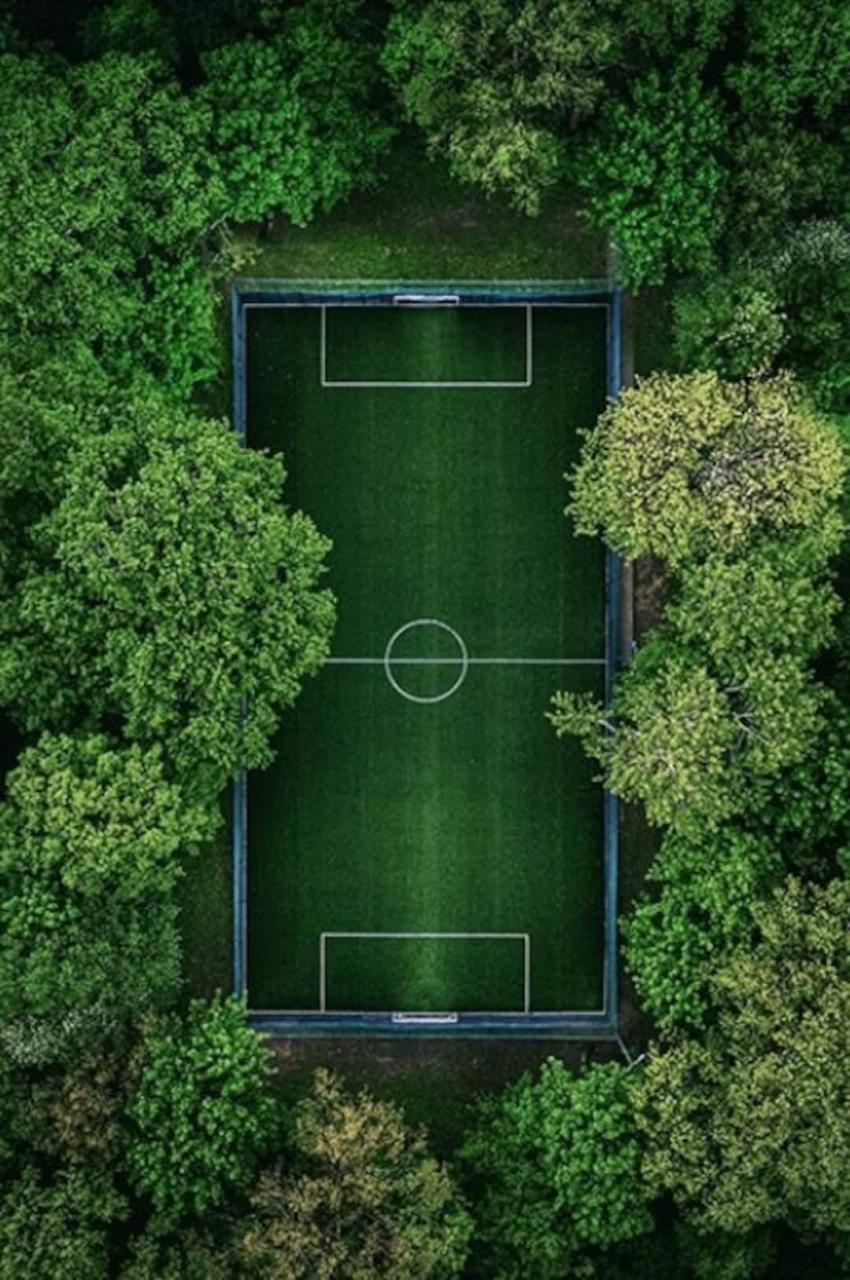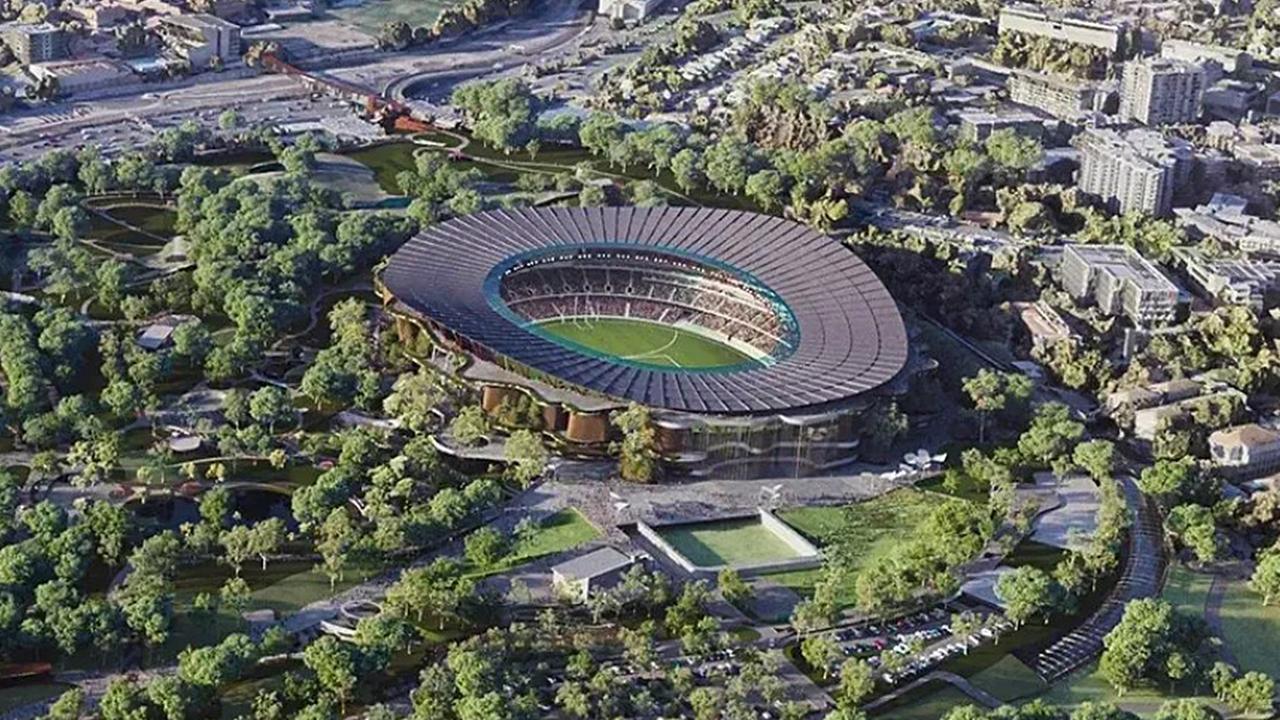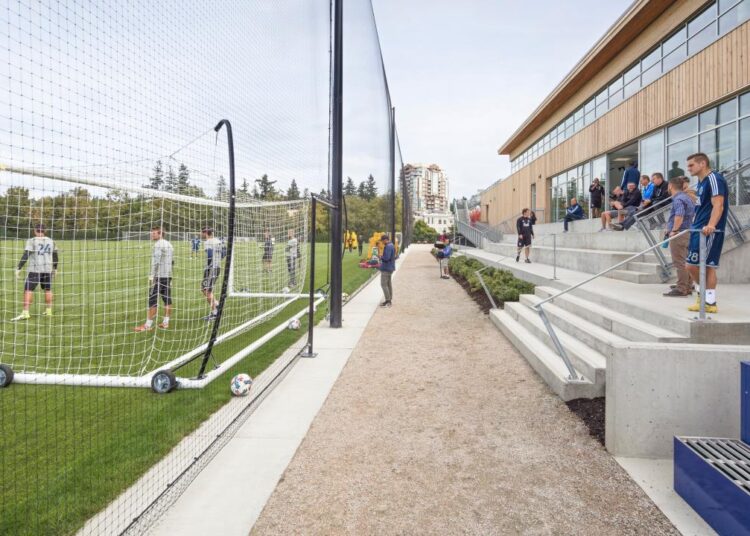The Next Evolution of Athletic Spaces: Beyond Concrete and Steel
The world of elite soccer training is fiercely competitive, with clubs and academies constantly searching for the marginal gains that can transform a promising young talent into a global superstar. Traditionally, the focus has been on cutting-edge technology, bespoke fitness equipment, and sophisticated tactical analysis. However, the next frontier in sports excellence is shifting—not to a new gadget, but to a deeper understanding of the human-nature connection. This is the realm of Biophilic Design.
Biophilic Design, literally meaning the “love of life,” is the conscious, strategic integration of natural elements, forms, and processes into the modern built environment. For a soccer academy, this means moving beyond the sterile, fluorescent-lit gym and the isolated, high-walled dormitory. It means creating a restorative ecosystem where physical training is complemented by psychological resilience and cognitive clarity, directly harnessing the healing and performance-enhancing power of nature.
The high-pressure environment of a professional soccer academy, where young athletes face intense physical demands, constant evaluation, and separation from family, creates an undeniable level of stress and cognitive load. Biophilic elements act as an essential antidote, providing the crucial mental and physiological recovery needed to process training, prevent burnout, and foster the sustained focus required for technical mastery. By intentionally weaving nature into the architecture of a training facility, clubs aren’t just building beautiful spaces; they are building better athletes—physically stronger, mentally sharper, and more resilient in the high-stakes world of professional football.
The Performance Paradigm: How Nature Elevates Athletes
The integration of Biophilic Design into a soccer academy is founded on clear, measurable physiological and psychological benefits that directly correlate to superior athletic outcomes. This approach moves training and recovery from being merely functional to being restorative.
Physiological and Recovery Benefits
The body’s ability to recover from intense physical exertion is the single greatest determinant of an athlete’s long-term performance and injury prevention. Nature is a catalyst for this process.
- Stress Hormone Reduction: Exposure to natural views, sounds (like running water or wind), and organic materials has been scientifically proven to lower levels of cortisol, the primary stress hormone. Lower cortisol levels allow the body to shift from a “fight or flight” state to a “rest and digest” state, which is essential for muscle repair and glycogen replenishment.
- Cardiovascular Regulation: Simply viewing nature can trigger a physiological response that leads to a decrease in heart rate and blood pressure. For an elite athlete, this accelerated return to baseline following a high-intensity training session means quicker readiness for the next challenge.
- Enhanced Sleep Quality via Circadian Rhythms: Maximizing exposure to Dynamic and Diffuse Natural Light within residential and common areas helps to regulate the athletes’ natural circadian rhythm (the body’s 24-hour internal clock). Proper light exposure, especially bright, blue-enriched light in the morning and reduced blue light in the evening, optimizes melatonin production, leading to deeper, more restorative sleep—the critical phase for physical recovery and hormonal balance.
- Improved Respiratory Health: Incorporating living walls (vertical gardens) and high levels of indoor planting acts as a natural air filtration system, reducing Volatile Organic Compounds (VOCs) and improving overall Indoor Air Quality (IAQ). Cleaner air leads to more efficient oxygen uptake and lower rates of respiratory irritation, maximizing lung capacity on the pitch.
Cognitive and Psychological Gains
Soccer demands high-level cognitive processing—split-second decision-making, spatial awareness, and tactical recall. Biophilic elements enhance these functions.
- Attention Restoration: Nature provides a form of “soft fascination,” allowing the brain’s directed attention faculties, which are heavily fatigued during technical drills and complex tactical sessions, to rest and recover. Short breaks in spaces with natural elements restore cognitive resources, resulting in improved focus, sustained concentration, and fewer errors during training and matches.
- Enhanced Reaction Time: Studies on exposure to green space indicate an improvement in cognitive metrics like attention and working memory. In soccer, where a split-second reaction is the difference between an assist and a turnover, this cognitive edge is invaluable.
- Increased Creativity and Problem-Solving: Biomorphic forms and fractal patterns found in nature (like the branching of trees or the patterns of a seashell) stimulate the brain in ways that encourage innovative thinking. This translates directly to the pitch, fostering players who can find unconventional solutions to defensive roadblocks or create unexpected passing lanes.
- Reduced Anxiety and Increased Mood: Green and blue spaces (water features) are consistently linked to lower anxiety, reduced anger, and increased positive affect (mood and vigor). For young players dealing with the pressure of performance and selection, this emotional stability is foundational to consistent output.
 The 14 Biophilic Patterns: Tailoring Design for Soccer Academies
The 14 Biophilic Patterns: Tailoring Design for Soccer Academies
The implementation of Biophilic Design must be systematic and intentional, using the globally recognized 14 Patterns of Biophilic Design adapted specifically for the needs of an elite sports environment.
Implementing Nature in the Academy Space
This category focuses on the literal, direct presence of nature within the training facility.
- Visual Connection with Nature: Designing common areas, dining halls, and especially recovery rooms to have expansive, unobstructed views of high-quality nature, such as a landscaped garden, a forested area, or even the main grass pitch.
- Non-Visual Connection with Nature: Integrating the sounds of nature, like the gentle rush of a water feature in the rehabilitation pool or the curated sounds of a forest in a relaxation pod, or the smell of essential oils derived from local plants in the physiotherapy area.
- Thermal & Airflow Variability: Using operable windows and smart ventilation systems in communal and sleeping quarters to allow for subtle changes in air temperature, humidity, and movement, mimicking a gentle, non-stagnant natural breeze.
- Dynamic & Diffuse Light: Employing translucent roofing materials over indoor practice pitches or using solar light pipes to bring natural sunlight deep into the gym and changing rooms, ensuring light quality changes naturally throughout the day to support alertness and focus.
- Connection with Natural Systems: Making the natural cycles visible. For example, designing a rainwater harvesting system that can be seen, or planting an organic vegetable garden (for the dining hall) whose growth and yield visibly change with the seasons.
Natural Analogues in Training and Living Areas
These patterns use non-living elements and materials that evoke nature to provide indirect, restorative connections.
- Biomorphic Forms & Patterns: Using curved architectural lines for common area seating, walkways, and locker room design instead of harsh, rigid angles. Incorporating geometric patterns found in nature (like honeycomb or spirals) into flooring or wall treatments.
- Material Connection with Nature: Prioritizing the use of unprocessed or minimally processed natural materials, such as exposed timber beams, local stone cladding, or polished concrete, especially in high-touch areas like locker rooms and physiotherapy suites. The color palette should favor earthy greens, browns, and blues.
- Complexity & Order: Integrating rich, non-repeating sensory information into the design. This could be achieved through the complex texture of a stone wall or the intricate tiling of a swimming pool, which provides visual interest without being cognitively demanding.
Nature of the Space: Optimizing the Athlete’s Experience
These patterns fulfill fundamental human evolutionary needs for safety, vantage, and discovery, crucial for athletes operating under constant scrutiny.
- Prospect: Designing elevated viewing decks or balconies that overlook the training pitches or surrounding landscape. This gives the athlete a sense of security, control, and visual orientation—a safe, unimpeded vantage point.
- Refuge: Creating intimate, secluded spaces within larger common areas, such as deep-set window seats, semi-enclosed seating pods, or private, sound-dampened meditation corners. These provide a feeling of protection and withdrawal necessary for mental recharge.
- Mystery: Designing paths and transitional areas that partially obscure the destination, enticing the athlete to explore. For instance, a winding path to the main training pitch or a slatted screen that only partially reveals the recovery hydrotherapy area. This provides a gentle sense of engagement and discovery.
 The Strategic Edge: Biophilic Design as a Competitive Advantage
The Strategic Edge: Biophilic Design as a Competitive Advantage
Integrating this philosophy is not a cost center; it is a long-term Strategic Asset for any world-class soccer organization.
- Talent Attraction and Retention: In the global race for elite youth talent, the quality of a club’s facilities is a key differentiator. An academy that explicitly markets itself as a sanctuary that promotes holistic well-being, recovery, and psychological health, not just physical intensity, holds a significant competitive advantage in attracting top next-gen soccer stars.
- Reduction in Training-Related Injuries: A core part of Biophilic Design is the reduction of chronic stress and the enhancement of restorative sleep. Since both chronic stress and poor recovery are major contributors to soft tissue and overuse injuries, a biophilically-designed academy environment can lead to lower rates of non-contact injuries and less time spent on the sidelines.
- Fostering a Culture of Well-being: The design subtly communicates to the athletes that the club views them as whole people, not just commodities. This commitment to holistic health boosts morale, loyalty, and job satisfaction (even for youth players), cultivating a more positive and high-performing culture.
- Longevity and Sustainability: Utilizing natural materials, maximizing daylight, and optimizing for natural ventilation inherently aligns Biophilic Design with sustainable and green building standards. This reduces operational costs (lower electricity for cooling/lighting) and demonstrates the club’s long-term commitment to environmental responsibility, resonating deeply with modern athletes and fans.
By choosing Biophilic Design, soccer academies move decisively into the future, acknowledging that the highest human performance is achieved not by fighting against nature, but by embracing and integrating it. The result is a new generation of players who are not only technically gifted but also possess the mental resilience and consistent health to sustain an elite career.






